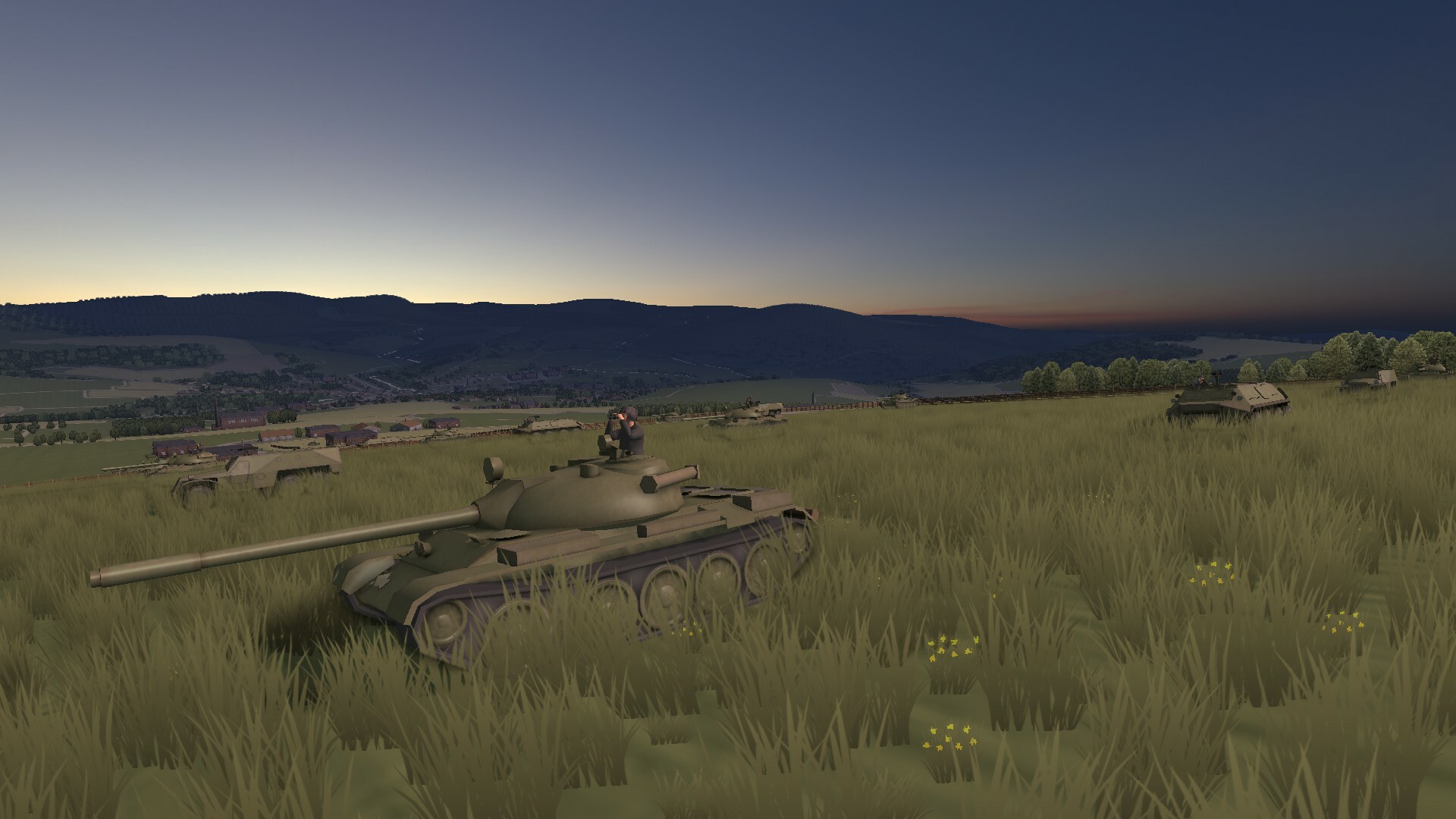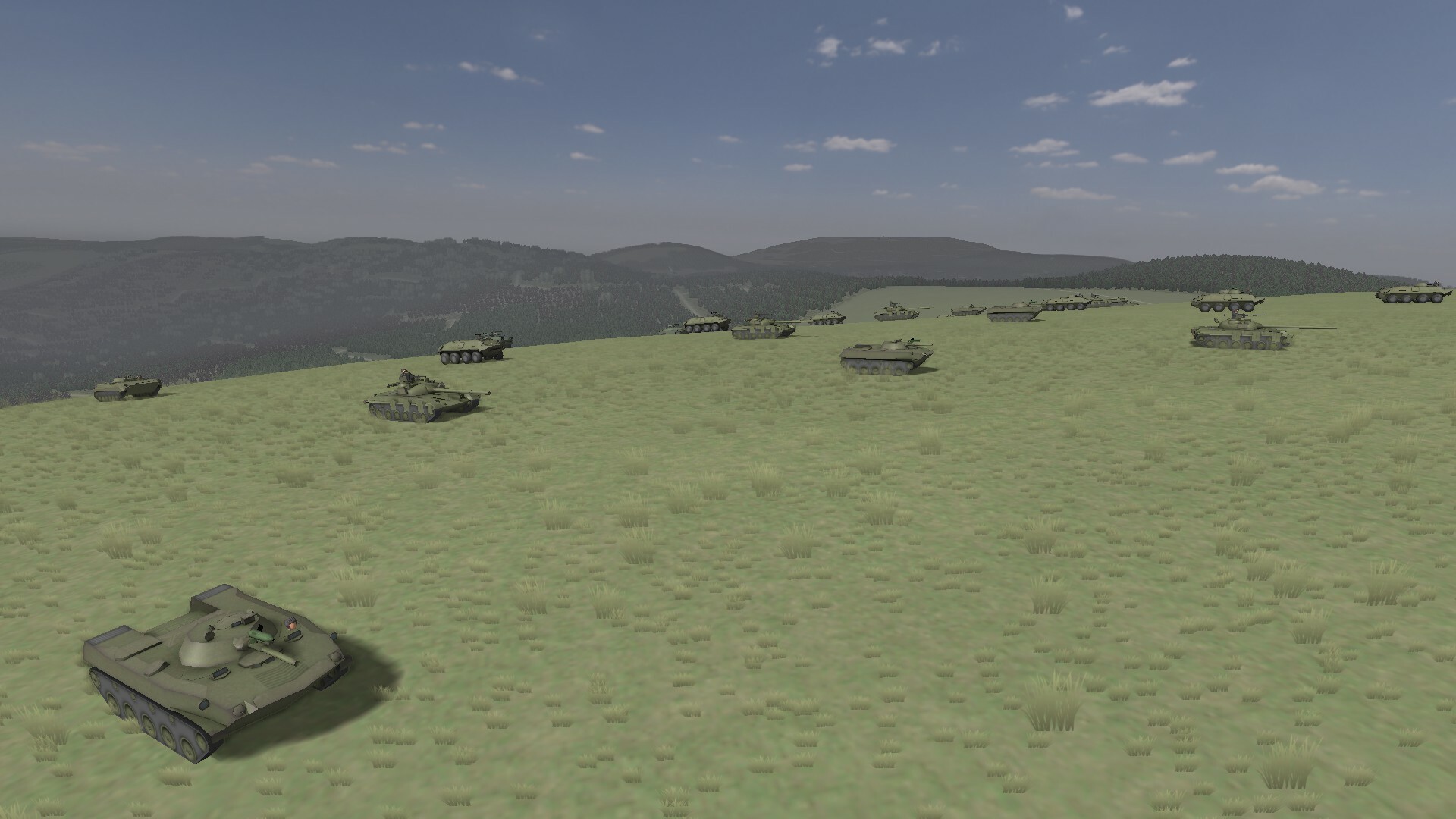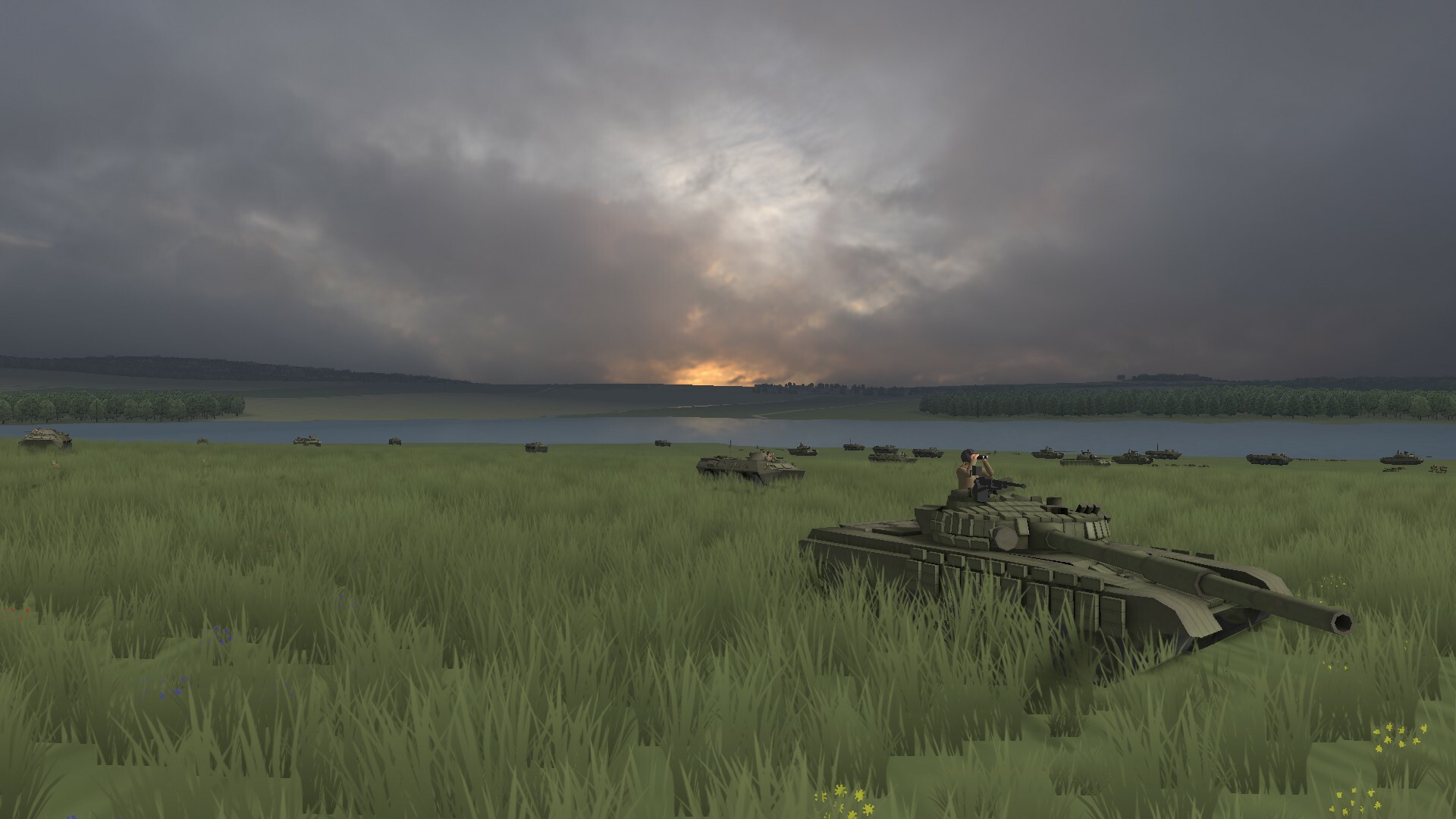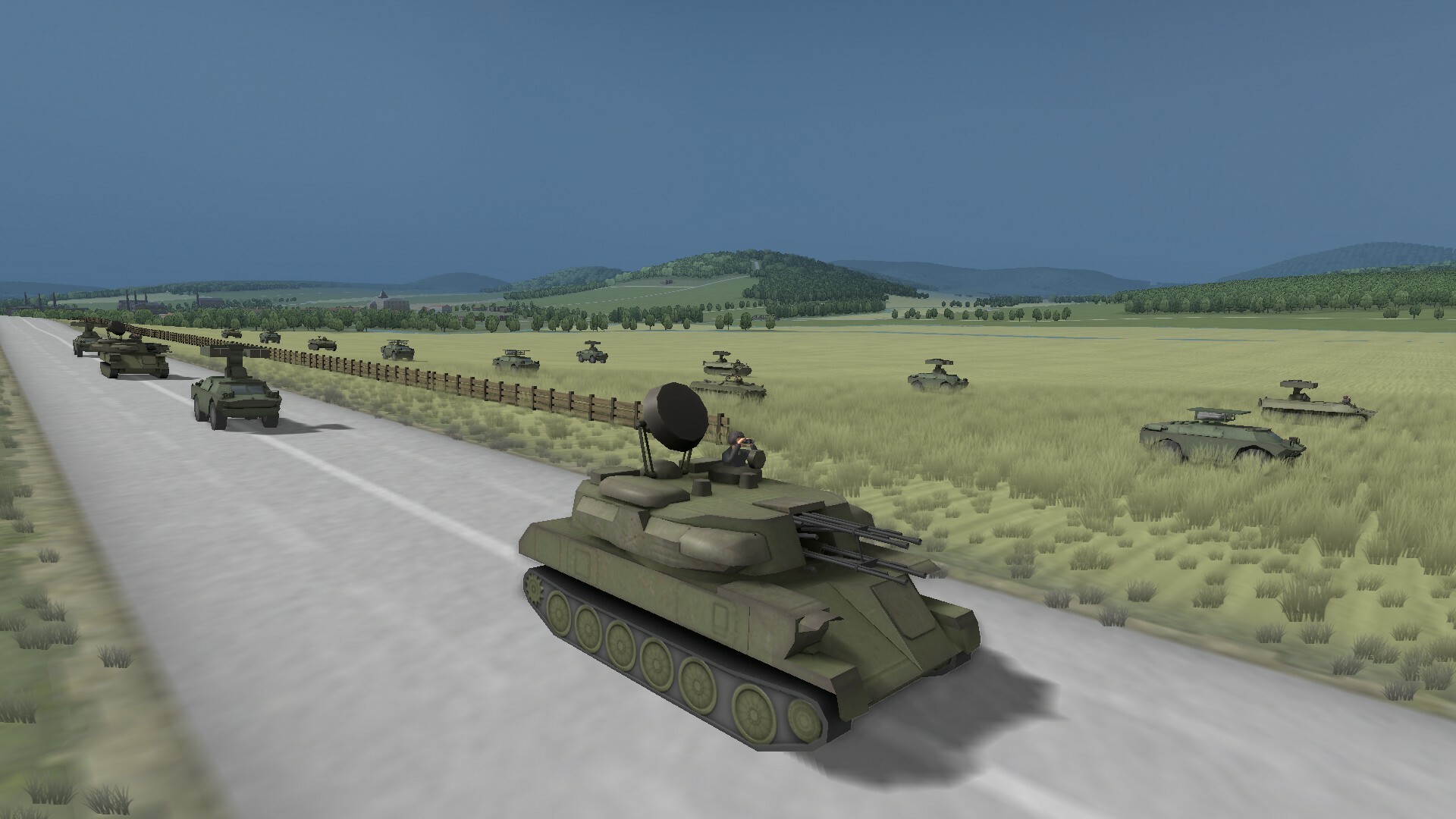As we continue the development of our game, today we take a slight detour from our usual feature updates to delve deeply into the doctrines that shaped a tense period in modern history. In this developer diary, we explore the tactical and operational evolution of the formidable Soviet Army from 1965 to 1991.
Why start in 1965?
In the early 1960s, the assumption was that the war would go nuclear at the outset, either because NATO, undeterred by the weak Soviet nuclear arsenal, would attempt to offset its conventional inferiority with nuclear weapons, or because the USSR would resort to first use. However, as the USSR attained nuclear parity, the likelihood of immediate nuclear escalation decreased. While 1967 might be seen as a pivotal year due to major doctrinal shifts, including NATO's formal adoption of the “Flexible Response” doctrine, we chose to start our database in 1965 to encompass a broader range of older equipment. This period saw Soviet military strategy adapt to the potential for conflicts beginning with conventional warfare that could escalate to nuclear war after several days or weeks. The Dnieper-67 exercise, focusing solely on conventional warfare, marked a significant shift from earlier exercises like “Vltava” and “October Storm”, illustrating a growing recognition of the catastrophic consequences of nuclear warfare and the utility of nuclear weapons as mere political tools.

1970s: A Decade of Soviet Dominance
The 1970s could be seen as the zenith of Soviet military power relative to NATO. Despite the ongoing nuclear threat, Soviet military experts believed nuclear weapon use would be delayed by fears of Soviet retaliation. The high oil prices that depressed Western economic performance buoyed the Soviet economy and undoubtedly prolonged the duration of the Soviet regime. During this decade, the Soviet military fielded hardware, such as the T-64/-72/-80 family of main battle tanks, that was often a match for—or even superior to—their NATO counterparts. Artillery units also began to receive self-propelled howitzers, closing the qualitative gap with NATO. Moreover, this decade saw a reorganization of Soviet forces, particularly tank divisions, which transitioned from being predominantly tank-heavy to a more balanced composition with more motorized rifle battalions. This change enhanced their staying power but also highlighted a critical issue: increases in unit size were not matched by corresponding improvements in doctrine, training, or command and control capabilities, potentially slowing operational tempo.

1980s: Intensified Competition
The failure of détente in the 1970s led to an intense flare-up in Cold War tensions during the 1980s. This decade might have set the stage for the most significant armed conflict in history, had it erupted. The Soviet Union, similar to Germany in both World Wars, faced a potentially overpowering coalition of Western economies and militaries. The imperative was clear: win early or not at all. Despite impressive paper strength, the reality was that full mobilization of Soviet forces could cripple the civilian economy, as partially revealed during the 1968 invasion of Czechoslovakia. Furthermore, the late 1980s marked a critical period of lag in the quality of Soviet weapon systems compared to NATO advancements. The era of stagnation under Brezhnev severely affected military capabilities, leaving Soviet units increasingly equipped with outdated technology and hampered by poor command flexibility. In response to these challenges, Soviet military theorists experimented with new organizational structures and reforms aimed at enhancing combat agility. They proposed replacing the traditional "regiment-division-army" hierarchy with a "brigade-corps" structure, remarkably similar to the 1980s-era French Armée de Terre. This new organization featured large battalions operating semi-autonomously within self-sufficient brigades, which were, in turn, loosely controlled by the new corps headquarters. However, these organizational reforms were still in the experimental phase when the Soviet Union collapsed.

Principles of Soviet Land Warfare
Soviet military doctrine was distinctly characterized by its emphasis on offensive operations and mathematical methods—specifically the COFM (Correlation of Forces and Means) approach—in operational and tactical decision-making. This strategic orientation reflects a broader philosophical approach that viewed defense as a temporary and transitional phase, primarily serving to prepare and position forces for a counter-offensive to prevent war on Soviet soil. Despite the apparent rigidity of a highly centralized command structure, Soviet doctrine was flexible in execution, with operations meticulously planned but also adaptable to battlefield conditions. Commanders were expected to manage large formations in a synchronized manner, ensuring that all elements of the army worked towards a unified goal. This centralization supported the mass and tempo, allowing for coordinated strikes and maneuvers.
The essence of Soviet maneuver warfare rested on two tenets: rapid tempo and concentrated firepower. These principles dictated that Soviet forces concentrate overwhelming force rapidly at decisive points to break enemy defenses and maintain operational momentum. Maintaining a high tempo meant reducing the time the enemy had to react, thereby forcing them into a defensive posture. The Soviet Army aimed to dictate the pace of the conflict, leveraging surprise and operational speed to disrupt enemy plans and cohesion. Mechanized and armored formations, supported by aviation and artillery, were designed to seize the initiative, penetrate defenses, and drive decisively into enemy territories.

How does this apply in game?
In wargaming, the principles of Soviet military doctrine offer a compelling gameplay framework. By emphasizing rapid, offensive operations, players are encouraged to think aggressively. This approach not only challenges players to maintain an offensive mindset but also to skillfully manage resources and timing to sustain the momentum. This means that even when positioned defensively, players should plan counter-offensives that exploit any lapse in the enemy's operations. Deploying forces in a concentrated manner at decisive points allows players to overwhelm specific sectors, mimicking the Soviet strategy of achieving overwhelming local superiority. This tactic, combined with an echeloned attack structure—where the initial forces engage and fix the enemy, allowing subsequent forces to exploit openings—mirrors operational art and brings depth to gameplay. Moreover, recognizing the inherent limitations and strengths of Soviet artillery in the game—its power versus its responsiveness—encourages players to pre-plan artillery strikes, shaping the battlefield in their favor before major assaults. This necessitates a proactive rather than reactive approach to combat, urging players to think several moves ahead. Additionally, strategic use of terrain is crucial, not only for masking movements in offense but also for defense and setting ambushes. Players must leverage mass and positioning to counteract technological superiority, turning numerical or operational advantages into a winning strategy against better-equipped foes. By integrating these elements, you will ensure that each decision is impactful and each victory satisfying.









